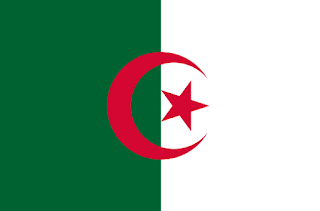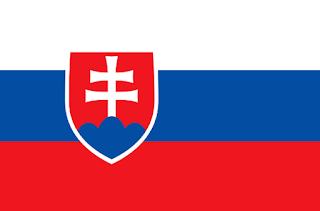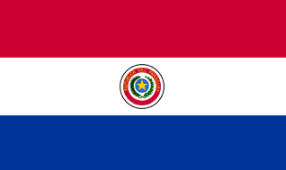FACTS ABOUT PHILIPPINES
AMAZING
FACTS ABOUT PHILIPPINES
1.
Manila is the capital city of
Philippines.
2.
The total population of Philippines is 104,256,076.
3.
The Philippine peso (PHP) is
official currency of Philippines.
4.
The Republic of the Philippines is the
world’s second largest archipelago made up of over 7,100 islands.
5.
The country is divided into three key
geographical areas. Luzon is the large island to the north on which the capital
city Manila is located. Mindanao is the large island to the south. The Visayas
are the group of islands lying between them in the middle.
6. The country has the fifth largest
coastline of any country in the world.
7.
Located on the western edge of the
Pacific’s Ring of Fire, the Philippines has hundreds of volcanoes and an
average of 20 earthquakes per day (most so faint they can’t be felt). The three
most active volcanoes are Mount Pinatubo, the Taal Volcano, and the Mayon
Volcano.
8.
The Negritos were the area’s earliest
inhabitants in prehistoric times (and still live in nomadic tribes in the
tropical forests today). Exchanges of peoples with Chinese, Indian, Malay and
Islamic states then occurred.
9.
Spanish colonization began with
Ferdinand Magellan in 1521 and in 1543 Spanish explorer de Villalabos names the
archipelago for the crown prince (later King Philip II) of Spain. The
Philippines remained a Spanish colony for over 300 years.
10.
As part of the settlement of the
Spanish-American war, Spain cedes the Philippines to the United States in 1898.
The U.S. begins to incorporate the islands’ Muslim areas by force.
11.
Japan seizes the Philippines in 1941 at
the beginning of World War II; U.S. forces retake the islands in 1944. The
islands are granted their full independence in 1946 (the first Southeast Asian
country to gain independence after the war) and renamed the Republic of the
Philippines. The U.S. military is awarded bases on the island in 1947.
12.
President Ferdinand Marcos is elected in
1965 and declares martial law seven years later. He lives lavishly while the
people live in poverty. He is ousted in 1986 by the “people power” revolt over
a stolen election.
13.
Several presidents come and go, some
through coups amid corruption allegations. Movie actor turned President Joseph
Estrada is ousted in 2001 by a military–backed uprising of the people and
sentenced to life in prison but later pardoned.
14.
Abu Sayyaf Muslim extremists take 20
hostages and troops comb the jungles in the southern island of Basil for them
in 2001. In 2002 the Filipino and U.S. armies hold joint counter-terrorism
exercises near the stronghold of this same Al-Qaeda-linked group.
15.
In September 2009 the Army captures a
leading figure in the MILF and in November a group of people on Mindanao are
attacked, killing 57. The massacre shocks the country. February 2010 the army
captures the Aby Sayyaf leader of the kidnapping and murder of Christian
missionaries in 2001. A former provincial governor and 195 more people are
charged with murder for the Mindanao massacre. President Benigno Aquino is
elected.
16.
In the southern Philippines in 2015,
hundreds of Muslim rebels register to vote in the 2016 elections under the
peace treaty signed to end 40 years of conflict. In October, a typhoon hits the
northern Philippines, killing 59 and causing extensive damage to fisheries and
farms.
17.
In 2016, an international tribunal rules
that claims China made in 2012 to the Scarborough Shoal reef off the coast of
the Philippines in the South China Sea (with its significant gas and oil
resources) has no legal basis.
18.
Filipino culture has been influenced by
both the East and the West with significant influences by Spain and the U.S.
also. It owes much to its Malay heritage as well. There are an enormous 184
individual languages spoken in the Philippines but Filipino (Tagalog) and
English are the country’s official languages.
19.
From their Austronesian ancestors
Filipinos are their famous “bayanihan”; a warm spirit of camaraderie and
kinship they exhibit as a culture. From the Chinese comes their close emphasis
on family ties and support. Their Catholic religion comes from the Spaniards
who brought their Christian faith with them in the 1500s.
20.
Though officially the Philippines are a
secular state, Christianity is the dominant faith and over 80 percent of the
population is Catholic. Traditional district festivals (barrio fiestas) that
commemorate patron saints’ feast days are common. The Moraines and Sinology
fiestas are two of the better-known community celebrations and they include
music and dancing as well as feasting.
21.
Traditional Philippine folk dances like
the “sigil” and the “tinkling” (featuring clashing bamboo poles and jumping
patterns) are being preserved by the Bayanihan Philippine National Folk Dance
Company. Filipinos still dress up and wear their national costumes of special
occasions, with women dressed in a “tern” (a long dress with flared skirt and
butterfly sleeves) and men wearing slacks and a “barong tagalong”, which is a
special shirt with sleeves made out of pineapple pulp.
22.
As of the 2000 census, 28 percent of the
country’s population was Tagalog, 12 percent were Cebuano, and Ilocano,
Visayas, Bicol, and Hiligaynon were all less than ten percent each. Another 25
percent of the population can be broken down into more than ten non-tribal and
indigenous people groups.
23.
The national dish of the Philippines may
well be the adobo, a stew of port or chicken cooked with soy sauce, vinegar,
garlic, bay leaf and peppercorns. “Adobo” means sauce in Spanish but the
Filipino version was indigenous to the islands long before the arrival of
Magellan. Other popular dishes include singing, halo-halo, lumpier, fish sauce
and milkfish.
24.
Meals are typically eaten three or four
times each day. Besides breakfast, lunch and dinner a family might have
“merienda” which is a late afternoon dessert or snack time. Rice is important
in the Filipino diet and may be eaten at every meal.
25.
Children go for six years to elementary
school and then for four years to high school for their mandatory education.
The University of Santo Tomas in Manila was founded in 1611 and the University
of San Carlos in 1595, making them both older than Harvard University, which
was not opened until 1636. Most of the students in the Philippines’
universities are female; they earn two-thirds of all master’s degrees awarded
and most all of the doctorates.
26.
The Filipinos celebrate secular holidays
as well as Christian, Chinese and Muslim ones. Some notable ones are the Day of
Valor, in which Boy Scouts re-enact and honor those on the Bataan Death March;
Independence Day on June 12 and National Heroes Day on August 30, in addition
to all the religious holidays.
27.
Christmas season in the Philippines
starts in September and ends with the Feast of the Three Kings in January.
Christmas feasts (Noche Buena) are said to compare to American’s Thanksgiving
dinner.
28.
Basketball is the Filipinos’ most
popular sport but cockfighting (or sabong) is also quite popular (particularly
with men). Sabong existed in the islands before the Spanish arrived. The
Philippines own Manny Pacquiao is currently regarded as the world’s best boxer
and when his bouts are on television, crime drops to almost zero in the cities.
29.
Social media is important to Filipinos.
The Philippines is now considered the text capital of the world. With more than
450 million SMS messages sent by the residents daily, they surpass the daily
texts sent in Europe and the U.S. combined.
30.
On July 27, 2014, the birth of a baby
girl made the population of the Philippines officially become 100 million. The
Philippians was the twelfth country in the world to reach this number.
31.
Half of the Philippines population is
estimated to live on the island of Luzon. The population is densest in the city
of Manila.
32.
As of 2007, there were an estimated 12
million native Filipinos living and working overseas. The money sent home by these
people accounts for approximately 11 percent of the economy of the Philippines.
33.
The Philippines supplies the rest of the
world with approximately 25 percent of all the overseas nurses that are
available worldwide.
34.
The national symbol of the Republic of
the Philippines is the national bird of the country, the monkey-eating eagle
(or Philippine eagle). This is the largest of all the eagles with a wingspan of
almost seven feet wide. Because this eagle is critically endangered, killing
one is punishable by 12 years in prison as well as a heavy fine. It is
estimated there are only 180 to 500 of these eagles remaining.
35.
The only place in the world where skunks
are found other than America is Indonesia and the Philippines, where they are
called stink badgers.
36.
In June of 1991, Mount Pinatubo erupted
and sent up a mushroom cloud of ash twenty five miles high. The effects of this
destructive eruption were felt throughout the world as 20 million tons of toxic
sulfur dioxide remained in the earth’s atmosphere for more than a year,
lowering its temperature by a degree for the same amount of time. There were
184 people injured and over 847 people killed when it erupted and more than a
million people left homeless.
37.
It is the only country in the world
whose flag is flown upside down when the country is at war.
38.
There are no large predator animals in
the Philippines except for snakes (cobras and pythons), birds of prey (like the
monkey-eating eagle), and salt water crocodiles.
39.
On these volcanic islands, mineral deposits
are abundant but remain largely untapped presently. The Philippines is believed
to have one of the largest copper deposits in the world and the second- largest
gold deposits after South Africa. It also has a supply of chromite, zinc and
nickel. The country is, however, the world’s second-largest geothermal energy
producer (after the U.S.).
40.
The Philippines is one of the world’s
ten most biologically megadiverse countries due to its huge and diverse range
of flora and fauna, including more than 170 species of birds and 100 species of
mammals not found to exist anywhere else on earth so far. (Megadiverse
indicates a country that harbors a high number of endemic species.) This
country has one of the highest rates of discovery in the world; sixteen new mammal
species have been discovered in the last decade.
41.
The Philippines’ waters are an important
part of the Coral Triangle. The Sulu Sea’s Tubbataha Reef is a 1993 World
Heritage Site. It sustains the cultivation of seaweeds, crabs and pearls. Seven
of the world’s eight giant clam species are found in the country’s waters. The
most expensive and rarest seashell in the world is from the Philippines. The
Conus gloriamus sold at auction for around $5,000.
42.
One acute problem found in the country
is deforestation, making the Philippines both a megadiversity country as well
as a biodiversity hotspot for global conservation. (A hotspot has a critical
need to conserve endangered and threaten species.)
43.
The rice terraces of the Cordillleras
remain has they were in pre-colonial times and are considered by the Filipinos
to be the eighth wonder of the world. They were built over 2,000 years ago and
are a UNESCO World Heritage Site today.
44.
Before the discovery of an underground
river in Mexico, Palawan’s Puerto Princesa Subterranean River in the
Philippines was the longest underground waterway in the world. It is five miles
(over eight kilometers) long. Mexico’s is over six miles long.
44.
45.
Not only is the country home to the
longest snake in the world, it is also the world’s longest reptile. The
Reticulated Python can grow to be as much as almost 29 feet in total length.
46.
The Philippines’ capital city of Manila
gets its name from the Nilad, a tree with star-shaped white flowers sometimes
called the Indigo tree because it yields blue dye.
47.
American soldiers can back from World
War II with a new word in their vernacular: “boondocks”. If you live out in the
“boonies”, you are isolated from others. The Word actually is based on a
Filipino Tagalog word that means “mountain” – bundok.
48.
After World War II, the Jeeps American
GIs drove in the Philippines were left behind and converted into the Philippine
Jeepney for carrying multiple passengers. Today’s 2nd and 3rd generation
Jeepneys include air conditioning and closely resemble colorful mini-buses.
49.
Three of the ten largest shopping malls
in the entire world are located in the Philippine islands. They are SM Mall of
Asia, SM North Edsa, and SM Megamall.
50.
Filipino Pedro Flores introduced the
modern form of the yo-yo as a popular toy but it actually had its beginning as
an ancient studded hunting weapon attached to a long rope. The name is from the
Ilocano language and means “come back”.
51.
Filipino Dr. Abelardo Aguilar invented
the antibiotic erythromycin in 1949. When he sent a sample to the Eli Lilly
pharmaceutical company (his employer), they quickly patented it. It is used for
people who are allergic to penicillin and has saved millions of peoples’ lives.
52.
In 1975 Filipino Roberto del Rosario
patented the “Sing Along System”, the first working karaoke machine. The
Japanese later translated the name to “karaoke”, meaning “singing without
accompaniment”.
53.
Ferdinand Marcos, the country’s first
elected president, died two decades ago yet hasn’t been properly buried yet. He
is “on ice” while officials decide if he should be buried with other past
presidents and the Philippines’ heroes in the cemetery reserved specifically
for them or not.
54.
Philippines Exports:
semiconductors and electronic products, transport equipment, garments, copper
products, petroleum products, coconut oil and fruits.
55.
Philippines Exports:
electronic products, mineral fuels, machinery and transport equipment, iron and
steel, textile fabrics, grains, chemicals and plastic.
56.
The internet country code for Philippines
is .ph.




Comments
Post a Comment